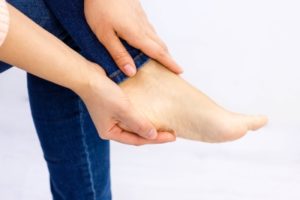Questions to Ask Your Podiatrist About Joint Pain
 Joint pain can impact everything from your workout regimen to your daily activities. If you’re suffering from joint pain in your feet or ankles, then read on to learn what questions you should ask your podiatrist in Chicago.
Joint pain can impact everything from your workout regimen to your daily activities. If you’re suffering from joint pain in your feet or ankles, then read on to learn what questions you should ask your podiatrist in Chicago.
How can I prevent bunions?
Bunions commonly appear as a bump at the base of the big toe, are usually painful, and form when the big toe bends toward the other toes. Because this joint supports much of the body’s weight, this condition can cause extreme pain and difficulty with walking, if left untreated. To help prevent bunions, choose shoes with a wide toe box, wear supportive shoes or orthotics if you have flat feet, and see a podiatrist for treatment if you notice any signs of deformity in your toe joints.
Can I get arthritis in my feet?
Arthritis typically causes swelling and inflammation in joint lining and cartilage. The foot has 33 joints that can be affected by arthritis, and individuals over age 50 are more prone to this condition. See a podiatrist if you experience joint swelling, pain, tenderness, heat, redness, or stiffness in your feet.
What is a hammer toe?
A hammer toe refers to a bend in the toe at the proximal interphalangeal joint. This condition affects women more often than men and usually occurs in toes other than the big toe. Hammertoes are caused by abnormal toe muscle balance, which puts pressure on the joints and tendon and causes the toe to contract.
